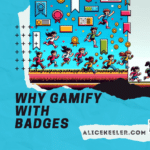Guest Post by Nikki Johnston-Fisher | Teacher | Fairbanks, Alaska
I’ve learned in remote teaching that it is important for students to also see the road ahead and know where they are going in their learning.
Nikki Johnston-fisher
The transition to remote teaching this spring, and having to begin remotely this fall, did not feel like a difficult one since I had already been using many of the digital platforms in person. I am also a Google Certified Trainer so I know my online tools very well. A welcomed change this year is that I have a reduced class size due to COVID since many families opted for homeschooling. This has given me more time to plan powerful lessons for my 4th and 5th graders and meet 1:1 as needed through the day and the reduced class size allows me to be more flexible.
Teacher & Student Clarity
Being extremely clear is even more important in distance learning than face-to-face instruction, and I do that by making my students’ learning targets visible and achievable, something I had not focused much on when we were in person. I voice-record all lesson instructions and provide read-aloud options for all students so they can access my directions and resources in a variety of ways. I found that posting their “I can” statements in every assignment on Google Classroom and in weekly work trackers helped them to have just a little more focus and drive to show what they know, as well as make connections beyond the classroom. I’ve learned in remote teaching that it is important for students to also see the road ahead and know where they are going in their learning. They reflect on that target before turning in an assignment, “Did I…” meet this learning goal with the work I am turning in to my teacher? This has been a small change with a big impact.
Student Choice in Remote
Something else that has benefited my students is allowing them to submit choice assignments in ways that showcase what they have learned. I have modeled several assignments after Catlin Tucker’s work, offering multiple ways for kids to process and share their learning. The choice model enables them to make larger connections to other topics and enables my students to take ownership and responsibility of their work. Allowing them to do assignments in ways that are meaningful to them is helping them to capitalize on their strengths in this trying time of remote-learning, and this is something we can all feel good about.
About the Author
Nikki Johnston-Fisher is a mother of three children in three different schools in her district in Fairbanks, Alaska. She teaches a 4th and 5th grade multiage classroom that includes math, writing, and science instruction and is a Google for Education Certified Trainer. She is passionate about using technology and teaching children and colleagues about how technology can enhance and advance their teaching and learning. She can be found on Twitter @NikkiJF152.






